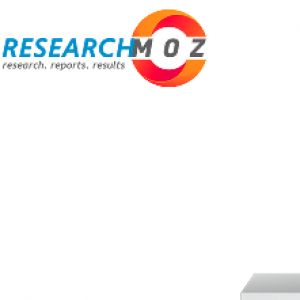High Purity Boron Market to Reap Excessive Revenues by 2027Posted by Hussain on June 28th, 2018 Fact.MR has announced the addition of the “High Purity Boron Market ” : Global Industry Analysis and Opportunity Assessment, 2018 to 2027" report to their offering. A new report available with Fact.MR, about the global high purity boron market, provides a comprehensive outlook of the industry trends. Sharp-eyed analysis of the changing global needs and consumption of high purity boron are few of the prime factors impacting the growth of the market. High purity metal industry experiences the pressure of providing better performance, quality, and affordability. High purity boron is highly sought after in the electronics industry. Further, it is utilized as a semiconductor dopant (for monocrystalline silicon doping), target material, coating or hardening agent, oxygen scavenger, refractory additive and a neutron absorber in nuclear reactor controls. Boron carbide is used in light-weight armor applications for military purposes. Absent in free form, boron is naturally found as compounds of borates, colemanite, and orthoboric acid. Worldwide industries utilize mainly four forms of borate minerals including colemanite, kernite, tincal, and ulexite to produce different forms of boron. Turkey and the United States hold the largest resources of boron, followed by North America, South America, Europe, and Asia. According to the U.S. Geological Survey, Approximately 70% of all deposits present in Turkey are colemanite. The deposits present in the U.S. consist majorly of tincal, kernite, and borates contained in brines, and to a lesser extent ulexite and colemanite. It has been estimated that at the current level of boron consumption, the world resources are adequate for the future utilization. Manufacturers deliver different grades of high purity boron starting from 99% to 99.9999% according to the end-user application. The highest purity levels are also sold under the name of ultra-high purity boron. As demand for high purity metals is rising, only a number of global manufacturers are dominating the global. However, other specialty chemical providers are gradually entering the global market with different purity grades of boron. Some of the key players in the global high purity boron market includes SB Boron, H.C. Starck GmbH, Dandong Chemical Engineering Institute (DCEI), CRS Chemicals, Baoding Zhongpuruituo Technology, New Metals and Chemicals Ltd., Tangshan Weihao Magnesium Powder, Yingkou Tanyun Chemical Research Institute Corporation, YingKou Liaobin Fine Chemicals, Liaoning Pengda Technology, and SkySpring Nanomaterials Inc. among others. Disruptive Growth of Semiconductor Industry to Fuel Utilization According to the World Semiconductor Trade Statistics’ (WSTS) latest forecast, the global semiconductor market is expected to reach US$ 451 billion in 2018, representing 9.5% of overall market growth. Rising penetration of artificial intelligence (AI), Internet of Things (IoT), and cloud based technology has fuelled the use of optoelectronics and sensors. Increased adoption of these devices has led to the rapid growth of the semiconductors industry. High purity boron is used in the manufacturing of silicon wafers where it is one of the elements used in the doping process along with other metals such as phosphorous and gallium. With the growing utilization of semiconductors, demand for high purity metals including boron is likely to rise in the foreseeable future. Advances in Nanomaterial Technology to Influence Future Market Growth Nanomaterials have now become an integral part of several industries including construction, packaging, healthcare, electrical and electronics, chemical products, and energy among others. High melting points, hardness, low density and electron deficient nature of boron makes it suitable for the development of nanomaterials such as boron nanowires, nanotubes, nanobelts, nanoribbons, and nanosheets among others. Boron nanomaterials find application in hydrogen storage, batteries, catalyst, superconductors, and other electronic components. Further, research in the field of boron nanomaterials in under way to enhance its application potential. For instance, recently a combination of hexagonal boron nitride and graphene has been studied to enhance capacities of valleytronics, an emerging field of semiconductor technology. Another study on boron nitride nanotubes (BNNTs) has revealed that BNNT microfibrils remain stable at higher temperatures such as 1000OC. The observation can be further extended in the aircraft industry to use BNNTs as an alternative to carbon nanotubes (CNTs). In conclusion, the global high purity boron market growth is mainly spurred by the expansion of semiconductor industry as well as innovations in nanomaterial technology. Details highlighted are thoroughly discussed in the report, providing the most credible source of the research for the global high purity boron market. About Fact.MR Fact.MR is a fast-growing market research firm that offers the most comprehensive suite of syndicated and customized market research reports. We believe transformative intelligence can educate and inspire businesses to make smarter decisions. We know the limitations of the one-size-fits-all approach; that's why we publish multi-industry global, regional, and country-specific research reports.
Contact Us Fact.MR 11140 Rockville Pike Suite 400 Rockville, MD 20852 United States Email: sales@factmr.com Like it? Share it!More by this author |


